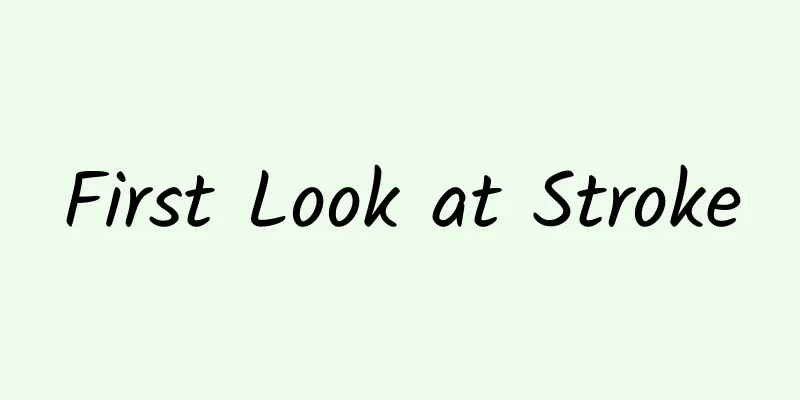First Look at Stroke

|
October 29, 2024 is the 19th World Stroke Day. This year's theme is "Integration of physical and medical care to defeat stroke." 1. What is stroke? Cerebral stroke, commonly known as "stroke", is an acute cerebrovascular disease, a group of diseases that cause brain tissue damage due to sudden rupture or blockage of cerebral blood vessels. It can cause patients to suffer from limb paralysis, speech disorders, swallowing disorders, cognitive disorders, psychological disorders and other symptoms. 2. How is stroke classified? It is usually divided into ischemic stroke (i.e. cerebral infarction) and hemorrhagic stroke (i.e. cerebral hemorrhage, subarachnoid hemorrhage). 3. What are the hazards of stroke? Stroke is the "number one invisible killer" of the life and health of the Chinese people. It has the characteristics of high incidence, high recurrence rate, high disability rate and high mortality rate. It seriously increases the economic burden on families and society. It brings great inconvenience to the life and work of patients. 4. What are the risk factors for stroke that can be intervened? (1) Hypertension, hyperlipidemia, diabetes, heart disease; (2) Smoking, excessive drinking; (3) Overweight, unreasonable diet, lack of exercise; (4) High psychological stress, etc. Actively controlling the above risk factors in our daily lives is a fundamental measure to reduce the incidence of stroke. 5. How to recognize a stroke? Once a stroke occurs, the common main symptoms include: sudden facial paralysis, slurred speech, weakness or difficulty in moving one side of the limbs, unsteady walking, severe headache, nausea and vomiting, impaired consciousness, etc. For easy memorization, it can be summarized as BE FAST (quickly identify stroke) B (BALANCE) Difficult to balance E(EYES) Can't see clearly F(FACE) is not straight A(ARMS) arm is uneven S (SPEECH) language disadvantage T(TIME) If any of the above symptoms occur, please call 120 immediately. 6. Treatment of stroke? Acute ischemic stroke accounts for about 70% of all strokes, and the treatment time window is narrow (within 4.5 hours of the golden time). The earlier the treatment, the better the effect. Timely intravenous thrombolysis and interventional intravascular thrombectomy within the time window are currently the most effective treatment measures. 7. How to prevent stroke? (1) Primary prevention: Active control of risk factors before a stroke occurs, including strengthening physical exercise, eating a healthy diet, quitting smoking and limiting alcohol consumption; using drugs to intervene in hypertension, hyperlipidemia, diabetes, atrial fibrillation, etc. (2) Secondary prevention: For patients who have already had a stroke, prevent recurrence. Including: antithrombotic, antihypertensive, lipid-lowering, and blood sugar control. 8. What kind of exercise is suitable for preventing a stroke? For example: walking, jogging, mountain climbing, dancing, shuttlecock kicking, table tennis, etc. Take action quickly, start with a healthy life and stay away from stroke! |
<<: What should I do if I have presbyopia and cataracts?
>>: The source of life: revealing the importance of water in the human body
Recommend
Oops! I sneezed and my retina detached
We often encounter patients with various eye dise...
What to do if your belly is dark after giving birth
1. During pregnancy, because pregnant women are a...
What medicine is effective for women with spleen deficiency
Spleen deficiency is a term in traditional Chines...
What to do if you have an ectopic pregnancy with an IUD?
An abnormal pregnancy process in which the fertil...
Can toys also harm hearing? The harm of noise cannot be ignored!
Review expert: Yuan Xiandao Beijing Anzhen Hospit...
I'm sweating all over when I have my period.
There are many reasons why a girl has hot flashes...
Eating the wrong oil may promote breast cancer? Which cooking oil should I choose?
Recently a friend asked me: I just saw a scientif...
How to prevent hand, foot and mouth disease?
1. Develop good hygiene habits 1) Wash your hands...
How to correct round shoulders for girls
Round shoulders are the same as hunchbacks, which...
What kind of peppers are used in hot pot? What are the characteristics of hot pot?
When talking about hotpot, half of people think o...
What are the characteristics of azalea's appearance and habits? How do azaleas survive the summer?
Azalea likes a cool and humid climate, semi-shade...
How long after giving birth can I do Kegel exercises?
How long does it take to recover from postpartum ...
What is the reason for yellow discharge on underwear?
There is a light yellow stain on the waistband of...
What causes pain in the middle of a woman's lower abdomen?
The position of a woman's lower abdomen is ve...
How to treat depression
The pace of life in big cities is relatively fast...









